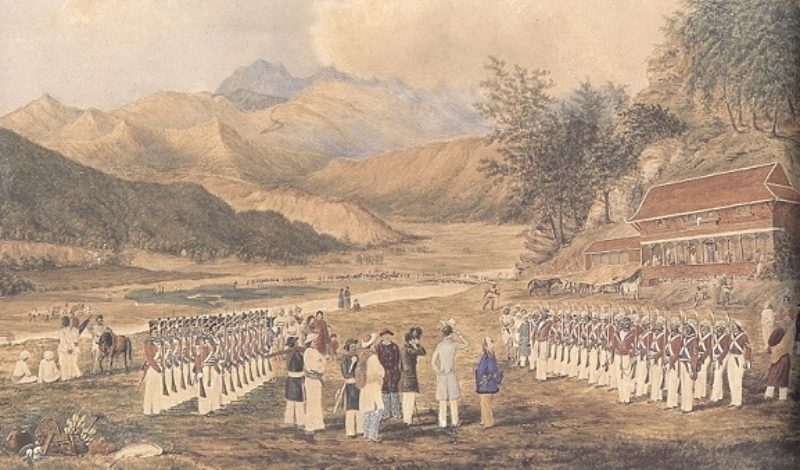The Treaty of Segauli – 4th March 1816

The Treaty of Segauli – 4th March 1816
A TREATY OF “PERPETUAL PEACE AND FRIENDSHIP”
After Nepal was unified into a modern state in the 1760s and 70s by the King of Gorkha, Prithvi Narayan Shah, many of the country’s leaders felt that expansion was the best form of foreign policy. A later prime minister, Bimsen Thapa, led a series of conquests into the Kingdom of Sikkim to the east, the Indian lands of Garhwal and Kumaon to the west, and finally territory administered by the British Honourable East India Company to the south. This was too great a provocation for the East India Company and the Anglo-Nepal War was formally declared in late 1814.
Several battles and engagements took place from the end of 1814 through to the spring of 1816. Initially, the British sent four columns of East India Company and British Troops into Nepal, attempting to fight Gurkha soldiers in strongly defended hilltop positions. These met stubborn resistance and in all but one case failed to achieve the easy successes that were expected. General Rollo Gillespie, commanding one of the four columns was killed early in the war.
It was during this first phase in the fighting that Lieutenant Frederick Young and others first recognised the superb fighting skills of the people they had come to subdue. They and officers like them saw how valuable these soldiers could be in the service of the Crown, and began recruiting even before the end of the war, with the first British Gurkha units being founded on 24th April 1815.
The war, however, was not over and began to drag on for both sides. A peace treaty was drawn up in December 1815 but not ratified, and a further campaign under the command of General Sir David Ochterlony was directed at the Nepalese capital of Kathmandu. After a number of skirmishes, the two sides met again in battle at Makwanpur, during which a British officer observed of the Gurkha soldiers “I never saw more steadiness or more bravery exhibited by any set of men in my life. Run they would not and of death they seemed to have no fear…”. Nevertheless, with Kathmandu threatened, on 4th March 1816 the Nepalese agreed to sign the peace treaty at Segauli.
Amongst a number of terms of this treaty, Article 1 stated “There shall be perpetual peace and friendship between the Honourable East India Company and the Rajah of Nipal (sic)”. As a result, Nepal is Britain’s oldest ally in Asia.

